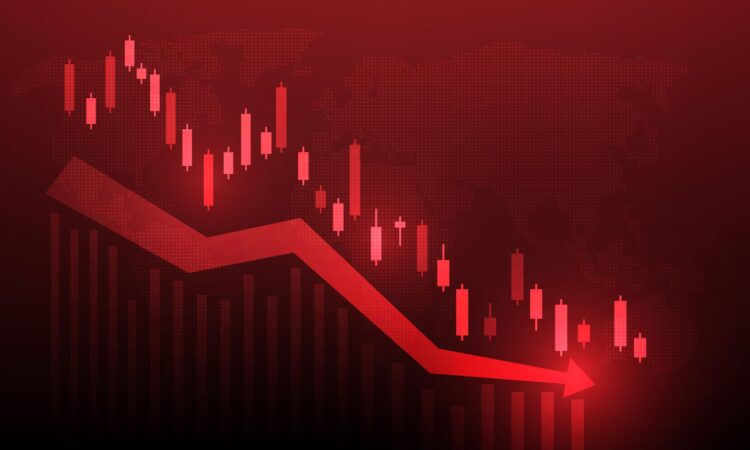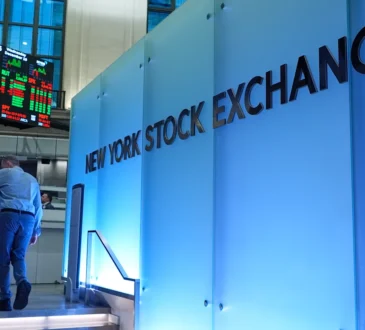
The broader market mirrored as much as ever a mixed-to-mostly-negative performance among the Magnificent 7 stocks that have driven the prodigious rally off April’s Liberation Day lows. The anticipation of more big numbers from another old-school blue-chip name wasn’t enough to lift spirits during a trading session marked by a repeat mini volatility spike.
With no end to the government shutdown in sight, The Wall Street Journal reports that the Federal Reserve has lost another source of employment statistics. As Nick Timiraos writes, “ADP stopped providing its data to the Fed shortly after a speech by Fed governor Christopher Waller in late August drew attention to the Fed’s longstanding use of its weekly payroll data.”
The Cboe Volatility Index (VIX) spiked early and got as high as 21.01, up from 17.87, before settling around 18.60. A “normal” range for the stock market’s fear index is between 12 and 20. “In a repeat of a recent trend,” observes Louis Navellier of Navellier & Associates, “the VIX jumped into the open” but drifted lower into “a minor difference day over day at the close.” Its action is “hard to explain,” he adds, but “certainly leaves investors cautious until a bottom is formed.”
Sign up for Kiplinger’s Free Newsletters
Profit and prosper with the best of expert advice on investing, taxes, retirement, personal finance and more – straight to your e-mail.
Profit and prosper with the best of expert advice – straight to your e-mail.
Navellier also notes that the lack of data on the economic calendar due to the shutdown has removed catalysts the market often rallies around, “with the primary benefit being the history of the Fed to lean dovish during a data blackout.” At the same time, “Earnings remain strong with a couple of notable exceptions.”
Navellier cites AT&T (T, -1.9%), which posted a small earnings miss but met revenue expectations and added more subscribers than forecast, and Texas Instruments (TXN, -5.6%), which had a small miss on the bottom and a small beat on the top but shared a softer-than-expected forecast. He also names Netflix (NFLX, -10.1%), which took its turn on the earnings calendar following Tuesday’s closing bell.
Meanwhile, International Business Machines (IBM, +2.2%) was No. 1 among the 30 Dow Jones stocks ahead of management’s post-closing-bell third-quarter earnings report. The FactSet-compiled consensus forecast is for earnings per share of $2.45 on revenue of $16.1 billion.
On Monday, Jefferies analyst Brent Thill raised his price target for IBM to $300 from $280, citing Big Blue’s strong software business, but reaffirmed his Hold rating. “While some of the software upside is priced in with the recent stock rally,” the analyst concludes, “we think IBM can grind higher if fundamentals strengthen.”
At Wednesday’s closing bell, the blue chip Dow Jones Industrial Average was off 0.7% to 46,590, the broad-based S&P 500 was lower by 0.5% at 6,699, and the tech-heavy Nasdaq Composite was showing a 0.9% loss to 22,740.
What’s next for NFLX?
Netflix gapped down on Wednesday after management of the communication services stock reported third-quarter earnings per share that fell short of Wall Street‘s expectations. The streaming giant posted EPS of $5.87, up 8.7% from $5.40 a year ago but lower than a FactSet-compiled consensus estimate of $6.96. Netflix cited an expense related to an ongoing dispute with Brazilian tax authorities that was not in its forecast for the EPS miss.
Revenue of $11.51 billion was up 17.1% from $9.83 billion and was in line with expectations. Absent the Brazilian tax expense, Netflix would have exceeded its forecast. “We don’t expect this matter to have a material impact on future results,” management said in a statement.
Noting that third-quarter results and fourth-quarter guidance “underwhelmed investors after several quarters of phenomenal results,” Wedbush analyst Alicia Reese reiterated her Outperform (or Buy) rating but reduced her $1,500 12-month target price for NFLX to $1,400.
“We think Netflix is positioning for substantial growth in global advertising, and that should not be overlooked,” Reese writes. “With that said, we think Netflix must demonstrate soon that its ad program can accelerate growth to justify a sky-high multiple.”
When will we hear from the Magnificent 7?
Tesla (TSLA, -0.8%) is scheduled to report after today’s closing bell. Nvidia (NVDA, -0.5%), the leader of the AI revolution, will report its fiscal 2026 third-quarter results after the closing bell on Wednesday, November 19.
Microsoft (MSFT, +0.6%) is scheduled to release its fiscal 2026 first-quarter results next Wednesday, October 29. Google parent Alphabet (GOOGL, +0.5%) and Facebook parent Meta Platforms (META, +0.02%) join MSFT to report its third-quarter results on October 29
E-commerce and cloud computing giant Amazon.com (AMZN, -1.8%) is up with its third-quarter results on October 30, while iPhone maker Apple (AAPL, -1.6%) will post its fiscal 2025 fourth-quarter numbers that day too.
AAPL stock hit its first new high of 2025 on Monday on multiple reports of a successful launch of its iPhone 17.
Winnebago with wings!
Winnebago Industries (WGO, +28.7%) soared as much as 29.1% on Wednesday when the recreational vehicle maker reported fiscal 2025 fourth-quarter EPS of 71 cents (+154% year over year) on revenue of $777 million (+8% YoY) vs a Wall Street consensus forecast for 53 cents on $727 million. The consumer discretionary stock had been down more than 30% year-to-date through Tuesday.
Management also introduced uplifting guidance for fiscal 2026: EPS of $2.00 to $2.70 on sales of $2.75 billion to $2.95 billion. Wall Street expects $2.24 on $2.87 billion.
As CFRA Research analyst Garrett Nelson explains, full-year estimates reflect expectations for “flattish” growth in North American RV sales of around 330,000 units in calendar 2026. Winnebago sees robust product momentum, though, and continues to manage its inventory well, Nelson notes, with “a clear pathway” to drive profitable revenue across its portfolio.
“Given ongoing pressures on consumer discretionary spending, we think significant demand-related questions remain, but the recent drop in oil prices (if sustained) is a big positive,” Nelson concludes.


